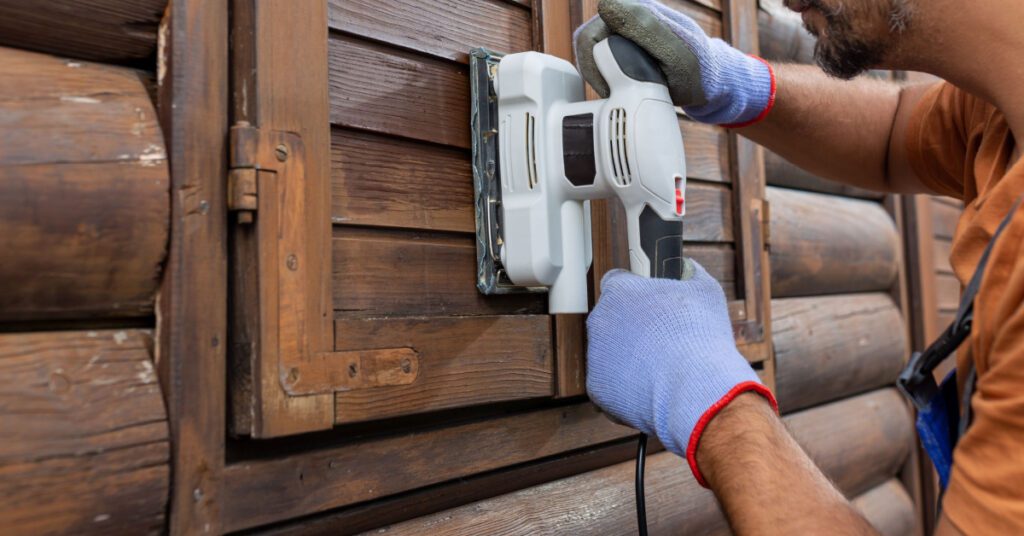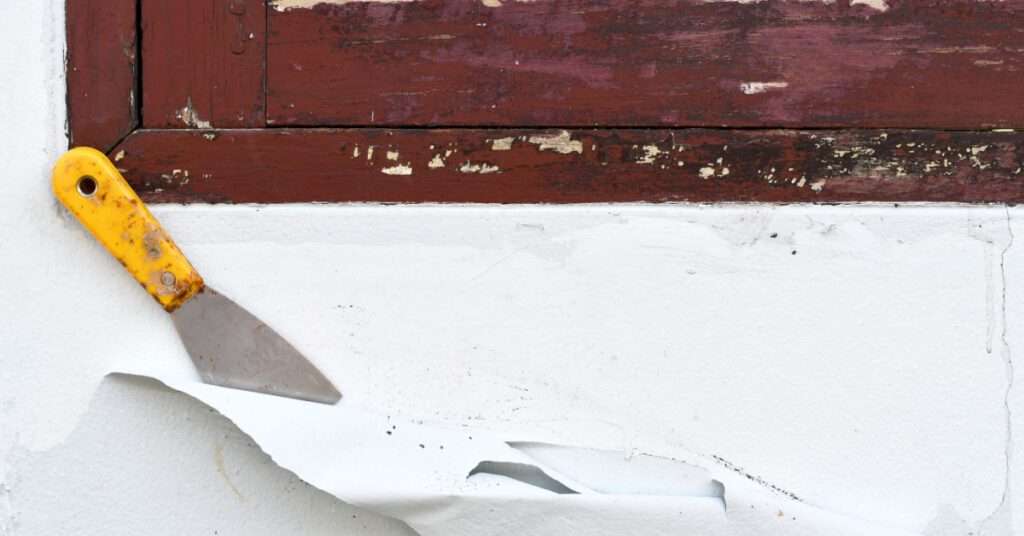Safely Removing Paint from Your Home’s Exterior: A Complete Guide
Maintaining your home’s exterior appearance is essential for aesthetics and protection. Over time, paint on the outer surfaces can deteriorate, requiring removal and repainting. However, removing paint can be hazardous, especially with lead-based paint.
In this guide, we’ll explore safe methods and tools to safely remove paint from your home’s exterior, emphasizing the importance of caution and, when necessary, professional assistance.
Warning: Hazardous Task Ahead
Before diving into paint removal, it’s crucial to recognize the potential hazards associated with this task. Older homes may have layers of lead-based paint, which poses severe health risks, especially during removal. Lead dust or fumes can lead to lead poisoning, causing developmental issues in children and other health problems in adults.
Always assume that paint in homes built before 1978 contains lead and take necessary precautions.
Tools To Safely Remove Paint But Always With Caution
Manual Tools for Paint Removal
- Paint Scraper: A handheld tool with a sharp edge, perfect for removing loose or peeling paint.
- Putty Knife: Useful for scraping away smaller or more delicate areas of paint.
- Wire Brush: Ideal for stubborn or textured surfaces, providing a more aggressive approach to paint removal.

Power Tools and Attachments
- Wire Wheel Attachment: An attachment for power drills or grinders, effective in quickly removing large areas of paint.
- Sand Paper Attachment: Used with power tools, it smoothens surfaces after paint removal.
- Abrasive Flap Disc Attachment: Offers efficient paint removal, blending, and finishing.
- Carbide Disc Attachment: Excellent for heavy-duty paint removal, particularly on harder surfaces.
- Electric Sanders: Random orbital or belt sanders can speed up the process, especially for larger areas.
- Sandblasting: This method employs compressed air to blast abrasive materials onto the surface, effectively removing paint.

Chemical Paint Removers
Chemical paint removers employ solvents such as methylene chloride or caustic soda (lye) mixed with water to soften and dissolve the existing paint layer. This facilitates easy removal through scraping once the paint has sufficiently loosened. Particularly advantageous for paint removal on brick or stone facades, specific formulations are specifically for these materials, ensuring swift action without causing any damage.
However, to safely remove paint, it is essential to approach chemical paint removers cautiously due to their potentially toxic nature. Thoroughly read and adhere to the label instructions. In addition, always wear appropriate protective gear to minimize exposure risks. A crucial safety precaution is never to mix different types of chemical removers, as this can release dangerous fumes or, in extreme cases, result in explosions.
The potential hazards associated with chemical paint removers highlight the importance of careful handling and strict adherence to safety guidelines during paint removal.
- Caution: Chemical paint removers often contain harsh substances, so follow safety guidelines.
- Application: Apply the chemical remover according to the manufacturer’s instructions, allowing it to soften the paint for easy removal.
- PPE: Always wear protective equipment to minimize exposure risks.
- Never Mix: Mixing different chemical removers can release dangerous fumes and, in extreme cases, can result in an explosion.
- Scraping: After the chemical has done its job, use manual or power tools to scrape away the softened paint.
Removing with Heat
When executed accurately, applying heat proves to be a successful technique for melting away layers of old paint without inflicting harm on the underlying surface. This approach to safely remove paint is suitable for wood surfaces, ensuring paint removal without causing damage.
However, it is imperative to exercise caution and avoid employing heat on metal surfaces. The rapid expansion and contraction induced by sudden temperature changes could lead to warping, making this method unsuitable for metal surfaces.
- Propane Blowtorch: This is best used for larger projects to help soften and lift paint, but extreme caution is necessary to prevent fire hazards.
- Electric Heat Gun: A safer alternative to the blowtorch, producing less heat without an open flame for precise paint removal.
- Infrared Paint Remover: Emits infrared heat to penetrate and loosen the paint, reducing the fire risk and ensuring a safer process. It does not produce smoke and fumes; therefore, it is an eco-friendly method without worrying about toxic fumes.
Power Washing
- Caution: High-pressure water can cause damage to surfaces and may spread lead dust. Use this method carefully.
- Preparation: Ensure the surface is suitable for power washing, and use a low-pressure nozzle to avoid surface damage.
To Safely Remove Paint, Always Emphasize the Safety
- Protective Gear: Always wear appropriate protective equipment, gloves, goggles, and respirators, especially with lead-based paint.
- Ventilation: Work in well-ventilated areas to minimize exposure to fumes and dust.
- Waste Disposal: Dispose of paint chips and debris responsibly, following local regulations for hazardous materials.
- Professional Assistance: If you need more clarification or are uncomfortable with the task, consider hiring professionals like Carolina Blue Painting in New Jersey. Trained experts can safely and efficiently remove paint, minimizing risks and ensuring a quality finish.
Prioritize Safety with Professional Assistance in Exterior Paint Removal
To safely remove paint from your home’s exterior, know that it’s a task that requires careful consideration of potential hazards and the use of appropriate tools and methods. Always prioritize safety, whether you choose manual tools, power tools, chemical removers, or heat applications.
Entrusting professionals like Carolina Blue Painting in New Jersey is wise for those unfamiliar with the complexities and risks. You can achieve a refreshed exterior without compromising your well-being by emphasizing safety and seeking expert assistance.
Contact Carolina Blue Painting and let us safely remove paint from the exterior of your home.

